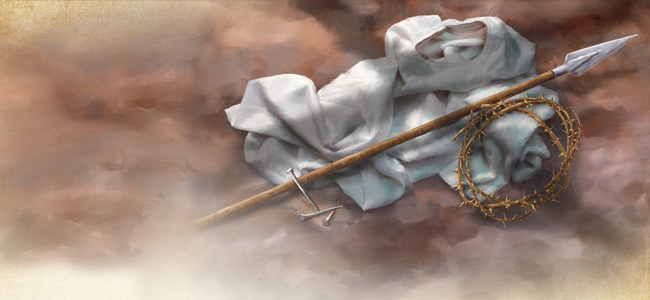The Road to the Cross

Jesus Christ is the Creator clothed in human flesh. “In the beginning was the Word, and the Word was with God, and the Word was God. The same was in the beginning with God. All things were made by him; and without him was not any thing made that was made. . . . And the Word was made flesh, and dwelt among us, (and we beheld his glory, the glory as of the only begotten of the Father,) full of grace and truth” (John 1:1–3, 14).
Through love, the Word that spoke the universe into existence condescended to our lowly human estate to lift us up and remake us—restore us—to the image of God. We are strengthened to break away from the corrupt mold of this fallen world to be amazingly transformed—enabled to become like Him in character, back to the way we were originally designed to be. “For we are his workmanship, created in Christ Jesus unto good works, which God hath before ordained that we should walk in them” (Ephesians 2:10).
Jesus “made himself of no reputation, and took upon him the form of a servant, and was made in the likeness of men: and being found in fashion as a man, he humbled himself, and became obedient unto death, even the death of the cross” (Philippians 2:7, 8).
When Christ submitted Himself to be smitten, scourged, and crucified on a wooden cross to pay the price for our wrongdoing, He revealed the power of a tremendous, unselfish love beyond comparison. “For when we were yet without strength, in due time Christ died for the ungodly. For scarcely for a righteous man will one die: yet peradventure for a good man some would even dare to die. But God commendeth his love toward us, in that, while we were yet sinners, Christ died for us” (Romans 5:6–8).
“The cross of Calvary appeals in power, affording a reason why we should love Christ now, and why we should consider Him first, and best, and last, in everything. We should take our fitting place in humble penitence at the foot of the cross. We may learn the lessons of meekness and lowliness of mind as we go up to Mount Calvary, and, looking upon the cross, see our Saviour in agony, the Son of God dying, the Just for the unjust. Behold Him who could summon legions of angels to His assistance with one word, a subject of jest and merriment, of reviling and hatred. He gives Himself a sacrifice for sin. When reviled, He threatened not; when falsely accused, He opened not His mouth. He prays on the cross for His murderers. He is dying for them. He is paying an infinite price for every one of them. He would not lose one whom He has purchased at so great cost. He gives Himself to be smitten and scourged without a murmur. And this uncomplaining victim is the Son of God. His throne is from everlasting, and His kingdom shall have no end. . . . Look, O look upon the cross of Calvary; behold the royal victim suffering on your account. . . .
“The Son of God was rejected and despised for our sakes. Can you, in full view of the cross, beholding by the eye of faith the sufferings of Christ, tell your tale of woe, your trials? Can you nurse revenge of your enemies in your heart while the prayer of Christ comes from His pale and quivering lips for His revilers, His murderers—Father, forgive them; for they know not what they do’ (Luke 23:34)?”1
Everybody’s got problems these days—all of us do. It seems that everyone is struggling just to survive. But one look to the significance of Calvary’s cross helps us get it all into perspective. “Behold, what manner of love the Father hath bestowed upon us” (1 John 3:1)! The abundant love of Jesus as the sacrificial the Lamb of God is indeed beyond measure.
So, in this issue of The Reformation Herald, please join us, as we look into some of the various aspects of that divine sacrifice, relishing in the glorious hope it brings to all who will open their heart to receive it.